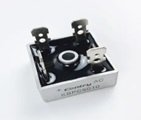Petrol Generator Rectifier: A Crucial Component
A rectifier is a vital component in petrol generators, especially those with brushless alternators. It’s responsible for converting the alternating current (AC) produced by the generator into direct current (DC). This DC power is then used to charge the generator’s battery or power external devices.
Types of rectifiers:
- Diode rectifiers: These are the most common type and consist of multiple diodes connected in a bridge configuration.
- Thyristor rectifiers: These use thyristors, which are semiconductor devices that can control the flow of current.
Key functions:
- AC to DC conversion: Converts the AC output of the generator into DC power.
- Battery charging: Provides DC power to charge the generator’s battery.
- Power supply: Supplies DC power to external devices that require it.
Common issues with rectifiers:
- Failure: Rectifiers can fail due to overheating, excessive current, or age.
- Short circuit: A short circuit in the rectifier can cause damage to the generator’s electrical system.
- Open circuit: An open circuit in the rectifier can prevent the generator from producing DC power.
Maintenance tips:
- Regular inspections: Check for signs of damage, corrosion, or overheating.
- Replacement: If the rectifier is faulty, it should be replaced.
Benefits of a properly functioning rectifier:
- Reliable power supply: Ensures a stable and reliable DC power supply for the generator and connected devices.
- Battery charging: Allows the generator to charge its own battery for extended operation.
- Efficiency: Improves the overall efficiency of the generator.
By maintaining the proper condition of your petrol generator’s rectifier, you can help ensure reliable operation, efficient power output, and extended battery life.





Reviews
There are no reviews yet.